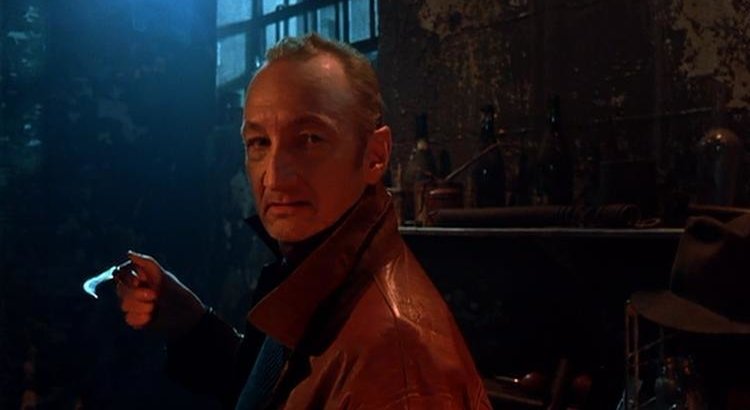
Was vengeance consummated or initiated as Fred was set ablaze? Were the murders and molestations of Elm Street’s youth the nature of the bastard son of a hundred maniacs, or the results of nurture a troubled boy received all his life? Is vengeance an achievable goal or a long defeat? The NIGHTMARE ON ELM STREET series (to call something a franchise suggests that the art of it all belongs to a business, instead of its fans) has been around for almost half a century. Because of that, so much has been said and repeated ad nauseam to the point where it needs a bucket and some Pepto. But not everything has been said. The richness of the series that Wes Craven brought to the vanguard opened it to many interpretations, intended or no. One person could see it as a bloody good time, while another could see it as a critique on pop culture junkies. This article is about the all-consuming and unrelenting power of vengeance on Elm Street, through its residents and the Springwood Slasher… and it begins with a locked door.
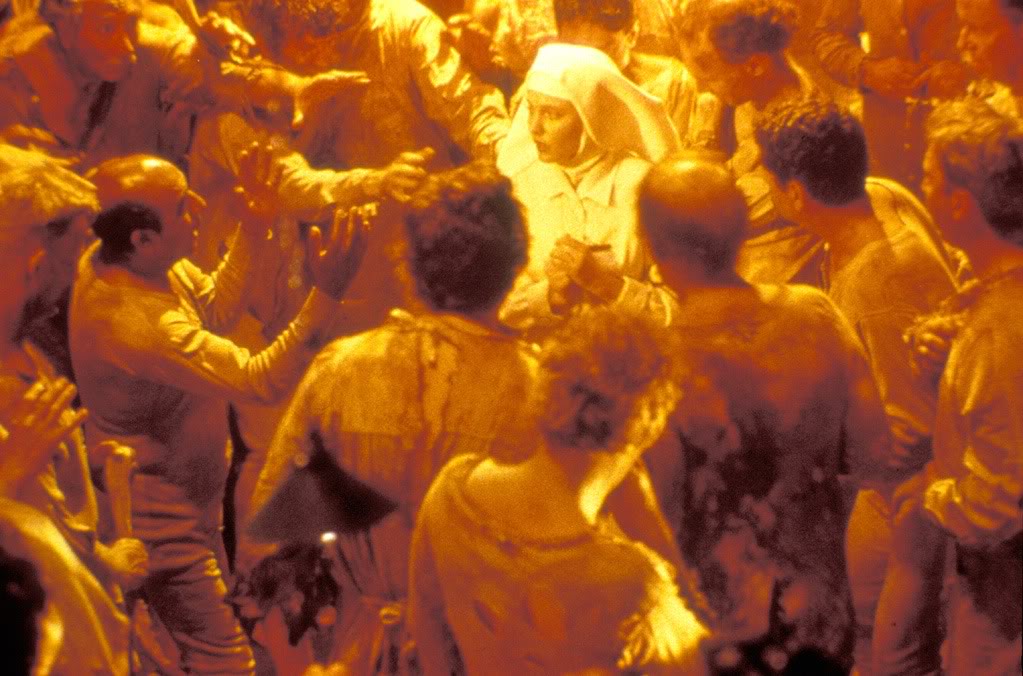
Although Jennifer Hills got it pretty bad in I SPIT ON YOUR GRAVE, she at least got to repay the insult of being raped with extreme prejudice. Amanda Krueger wasn’t so “lucky.” Her belated Christmas present for being a nun was to be accidentally locked in the asylum she worked in with inmates who knew neither fear or shame when it came to the perversions they could inflict on a woman. For days. When she was eventually found, she was beaten. Broken. And pregnant. No one knew who the father was… how could they? Since abortion and Catholicism were like brown and clear liquor, Freddy became the bastard son of a hundred maniacs as soon as he started to crown. Amanda eventually committed suicide and her son became infamous.
But let’s go back to those inmates.
I’m not a dude-bro, so raping a woman if she’s locked in a room with me doesn’t pop up in my dialogue tree. And I doubt that it crosses the minds of most mentally unstable people. So what would drive 100 men to rape a nun? The reason why fans never cried foul when NIGHTMARE ON ELM STREET 3 dropped this bomb was because they inherently knew how fucked up asylums were. In 1887, Nellie Bly was committed to Blackwell, New York’s worst mental institution. She was a journalist who was told by her editor to find a flashy story and prove herself as a writer. Only terrible things were reported to have happened in Blackwell, and you had to try really hard to get sent to that isle of madness (it’s Roosevelt Island now). Ms. Bly did and for almost two weeks, she found out first-hand the rainbow of ways how the absolute power orderlies have over their inmates corrupts absolutely. Even wrote a book about it, TEN DAYS IN A MADHOUSE. In it, she described how inmates were beaten, choked, and otherwise abused by orderlies, how inmates were practically drowned in ice water in place of baths, how doctors didn’t care, and other warped things. In 1937, the Rosewood Center in Maryland got in trouble by way of Leo Kanner. Along with discovering autism, he exposed “the Rosewood girls”. They were girls who, over 20 years with some who essentially grew up in bedlam, were bought by Baltimore’s elite and made slaves. In the mid-60s, Bill Baldini ran a multi-episode exposé on Pennsylvania’s Pennhurst State School and Hospital. It showed people strapped to beds and otherwise dehumanized in the overpopulated halls, and told tales of orderlies going to extreme measures to keep inmates calm. In 1972, Geraldo Rivera exposed Willowbrook State School in New York and how it became a dump for unwanted children and their suffering. Think that’s a 20th century thing? In 2003, a woman spent 12 months in Kent’s Little Brook Hospital getting raped over 50 times by a care worker. These are just some of the atrocities that mental patients have suffered throughout time, and the only ones we know about. The first NIGHTMARE ON ELM STREET was released in 1984, so let’s assume that it happens then. Freddy looked to be in his 40s in FREDDY’S DEAD and FREDDY VS. JASON when they showed him being burned alive, so we’ll say that he was born in the 1930s. A zenith for inmate misanthropy. When Amanda was locked in with those hundred maniacs, she was also locked in with who knows how many collective years of abuse and sexual frustration along with whatever mental maladies they had. I’m not at all condoning their actions; rather, I’m flipping the microscope into potentially another direction. And who’s to say that she wasn’t one of the people who fucked with them? We only know the “after”, and not all papal figures are chaste. It’d definitely be disgustingly overkill, but they could’ve seen Amanda’s predicament as a way to repay the insult of their mistreatment with extreme prejudice.
So, in a way, the ‘Vengeance on Elm Street’ began before Freddy was born. But as the Beatles sang while the abusers agree, ob-la-di, ob-la-da.
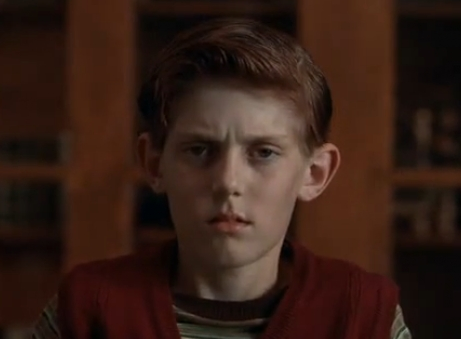
Freddy had no choice but to be dumped in an orphanage, so he was. Don’t let PROBLEM CHILD fool you, not every unwanted child gets to go home with John Ritter and his hot wife. Ever hear of the Duplessis Orphans? In the 1940s-1950s, one of our friends up north, Maurice Duplessis, had a great idea. Quebec, at the time, gave $1.25 a day per orphan in an orphanage and $2.75 a day per psychiatric patient in a hospital. Being Quebec’s premier and a strict Catholic, Duplessis put churches in charge of hospitals, schools, and orphanages. The government then sent healthy children to psychiatric hospitals where they were physically and sexually abused as well as given shock treatment, straitjacketed, and lobotomized. All for a nice paycheck. How many kids? Around 20,000. Quebec’s Catholic Church still won’t acknowledge them. In the 1950s-1960s, the 300-odd White House Boys of Florida’s Dozier School for Boys suffered plenty. They were beaten. A lot. One boy passed out after being bludgeoned with a leather strap while his feet were tied to a bed. His friend told him he was hit 135 times. Eighty-one boys died while living there and were buried in unmarked graves. For 60 years in Ireland, until 2009, many of the 35,000 orphans (kids and teens) were sexually, mentally, and physically abused by folk of the cloth. Ireland’s Catholic Church protected the pedophiles to save the organization’s reputation. These are extreme stories… but the horror genre is an extreme one. Those kinds of things could’ve been par for the course in Freddy’s orphanage, or they could’ve been scary stories the kids shared with each other. We don’t know how long Freddy was an orphan, either. It might’ve been only for a year or two, or it might’ve been until the day before he killed his new alcoholic father, Alice Cooper. Freddy could’ve done things like smash that hamster to death with a hammer or prove to his drunk dad that not only women bleed because he was enacting vengeance for all the bad that happened to him. Or because he was an evil fuck. Like bastard, like son(?).
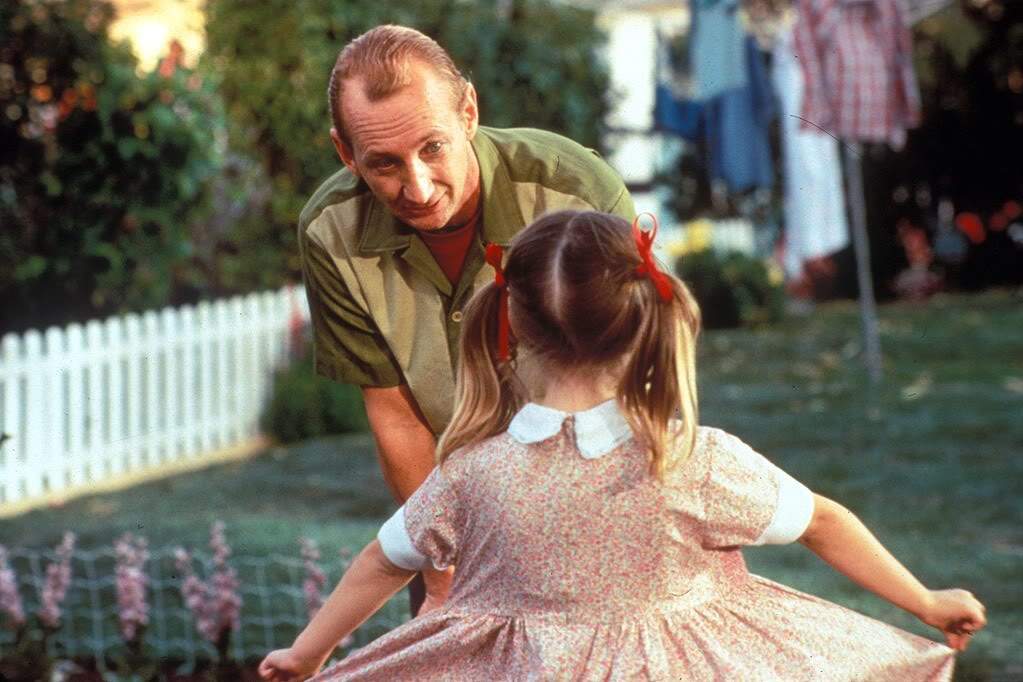
Let’s shift a few gears and flash-forward a few decades. To when we have the Freddy above…
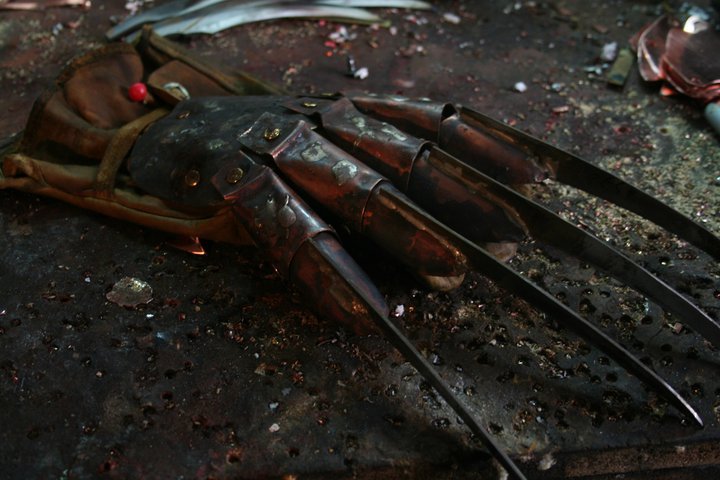
…and the Freddy below. One of the most fucked-up things about Freddy is that he murdered and molested children while being happily married to Loretta and raising Katherine. In FREDDY’S DEAD, he confessed to his all grown up daughter that he was a monster because the world made him one. While trying to kill her. As comic books have taught me, the act of vengeance is an exercise in duality. The most sterling example is Batman. Bruce Wayne swore to his dead parents at eight years old that he would be vengeance for them and make sure that no one in Gotham City went through what he did. The interesting thing is that he chooses to be Bruce Wayne and Batman. He didn’t throw Bruce away even though it’s clear that he prefers Batman. The consensus among fans and the gatekeepers is that Bruce is the mask. The notion even popped up on an episode of BATMAN BEYOND when he said, “The voice kept calling me ‘Bruce’. In my mind, that’s not what I call myself.” So why does Batman keep Bruce? Probably for the same reason that the Springwood Slasher kept Freddy: the mask of normalcy, though Batman and Freddy wore it for different effects. In the MURDERER? and FUGITIVE storylines, Bruce was framed for murder and Batman used it as an out to be free of him. Over time, however, he found that there were some ways to help that only Bruce could and that sometimes, he needed a break from the cape and cowl to reset. Maybe the Springwood Slasher kept Freddy because no one would accept the family man could be the worst thing that ever happened to Elm Street. It didn’t seem like he was annoyed by it since the only reason he stopped was because of the two gals in his life. Loretta found what he had in the basement one day and while he was… giving her some medicine, Katherine also saw his toys. And her father strangle her mother. He made her promise to never tell anyone, but who could keep such a juicy secret for long? Bruce Wayne’s not the only child who could commit an act of vengeance for at least one dead parent.
Anger is a double-edged sword. It can give you energy and strength to do unimaginable things. It can also distract you from giving something your full attention. Child murder and molestation is a great fuel for anger, and I’m sure the police got it by the drum when little Katherine told them what her pop-pop was up to. Like the splashing flames of ignited gasoline, Anger the Contagion spread viciously from the police to the judge. And in all its distracting glory, anger made the judge sign the search warrant in the wrong place. Thus, when Freddy’s house was raided, when all the evidence was bagged, while all the right fingers pointed to him, while all the grieving parents waited for justice in the courtroom… the Springwood Slasher was found “not guilty” because of a technicality. The contagion quickly spread again to everyone in that room who lost a child, turned grief into rage. Turned sullen parents into a mob of vengeance. Anger is a double-edged sword, but it can also be a Molotov cocktail. And that cocktail can burn a man alive. Literally, in Freddy’s case. As his stripes were turned to cinder, the parents of Elm Street felt sated. Vengeance was theirs.
For a while.

Tina was slashed up a wall, Rod was hung in his cell, Glen erupted into a geyser of blood, Marge was burned to death, and Nancy thought she won. Coach Schneider was slashed in the shower, Grady was stabbed in his bedroom (after a scene that confidently ended the chest trauma trilogy in horror [starting with ALIEN and continuing with THE THING]), a bunch of kids are killed by the pool, and Jesse thought he won. Philip was marionetted off a bell tower, Jennifer was on primetime, Taryn got high, no one believed in Will, Nancy was betrayed, and Kristen thought she won. Kincaid was stabbed in a junkyard, Joey had a wet dream, Kristen was boiled alive, Sheila got her face sucked, Rick was embarrassed, Debbie checked in (but didn’t check out), and Alice thought she won. Dan was wrecked, Greta was what she ate, Mark was retconned, and Alice thought she won. Then something interesting happened with FREDDY’S DEAD: Freddy won. Before it started, in fact. When an adult Katherine returned to Springwood, she saw that there weren’t any children left and the town was driven mad because of it. Vengeance was not only had by Freddy, it was conquered. For most people who decide to walk down the road of vengeance, sooner or later, they find out that they’re preparing for the long defeat. Eventually, they’re consumed or destroyed by it. Just ask Batman, Punisher, Spider-Man, Green Arrow, and pretty much most DC’s and Marvel’s heroic rosters. Ask any of them to quit (“You’re funny, kid.”), then ask any of them what it’ll take to get them to quit (“Death before dishonor.”). Freddy did what he set out to do, sick as it was. The “problem” was that he got greedy. Springwood wasn’t enough, and he needed his daughter to get him out to other places because “every town has an Elm Street”. Then Katherine was able to get her vengeance twice(!) by killing her father.

Then something interesting happened with NEW NIGHTMARE: Freddy swore vengeance on his creators. Or rather, a version of Freddy. A form of evil that existed since time began and was sated by inhabiting villains in stories worthy of it. From 1984 to 1991, Freddy was the fortunate one. But New Line Cinema killed Freddy, thinking that the NIGHTMARE ON ELM STREET series had run its course. The evil was not pleased. The evil was vengeful. Soon, it made its way into reality through Freddy’s creator, Wes Craven, the actress who played the first person to destroy him, Heather Langenkamp, and the people they knew. Firstly, and fittingly, it was through their dreams. Nothing serious, just faint harbingers. Promises from a phantom not yet flesh. Yet there was a countdown to Freddy’s return by way of Heather’s son, Dylan. Like Alice and her unborn son, Jacob, in NIGHTMARE ON ELM STREET 5, the more Heather lost Dylan to Freddy, the stronger Freddy became. Strong enough to kill Nancy and cross over. Freddy first claimed Chase, husband and father. Then Julie, in front of Dylan. Heather then lost John Saxon, but not like everyone else. He played her father, then he became her father. The final beckoning by Freddy to Heather for her to be Nancy one last time. She did, then stopped Freddy’s vengeance, putting him and evil back where they belonged.
Then I got FREDDY VS. JASON in 2003 and all was right with the world.
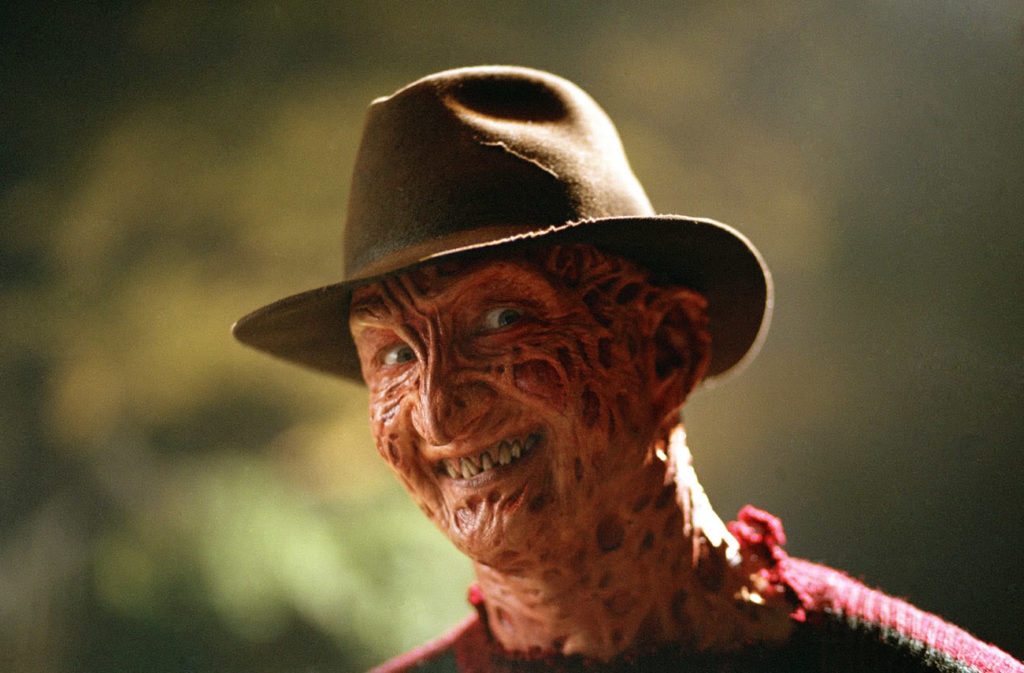
Tags: Heather Langenkamp, Horror, Johnny Depp, new line cinema, Robert Englund, Wes Craven

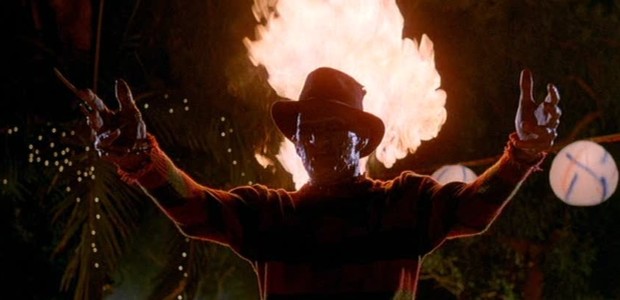
No Comments